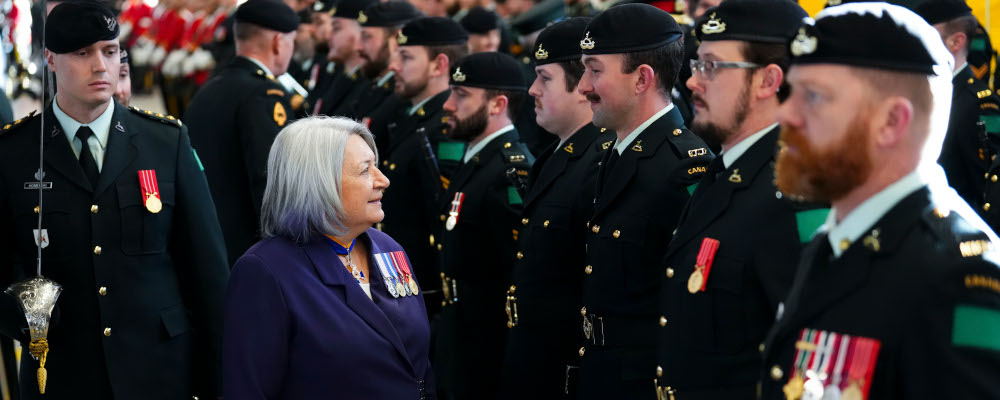Quantitative easing—where central banks purchase large volumes of government debt—has created significant challenges for central banks all over the world.
Canada is no different.
The Bank of Canada faces sharp criticism from many quarters. It has engaged in a “money-printing orgy,” according to Conservative Party leader Pierre Poilievre. It is also blamed for enabling federal deficits and, most recently, for incurring unprecedented financial losses.
While most of these critiques are understandable, they can be avoided. There’s a better way to do QE, and it should be on the table when Canada’s next economic crisis inevitably arrives.
Simply put: we should allow the Bank of Canada to become directly involved in government “debt management” decisions. I know that sounds boring, but do keep reading.
First, some background.
In normal times, the Bank of Canada sets interest rates for very short-term (overnight) borrowing. That cascades through the banking system and affects borrowing costs for everyone.
But when the Bank’s policy rate falls to near-zero—as it did in March 2020—they look to lower longer-term rates instead. It cannot set those directly, so it purchases massive quantities of long-term bonds to indirectly lower long-term rates.
The catch: to buy those bonds it must use newly created money. Not literally cash, of course, but commercial bank reserves that are deposited at the Bank of Canada.
That’s where the confusion comes in.
Creating bank reserves is, in a very real sense, “printing money.” The Bank itself says as much. It also means the Bank is purchasing most government bonds at a time of rising deficits, which makes it appear to be financing the borrowing. And since it results in large commercial bank reserves, which earn interest, Bank of Canada expenses rise rapidly along with interest rates. That’s why the Bank is losing money today.
This way of conducting monetary policy leads to significant confusion among the public and politicians alike.
QE is better thought of as changing what type of government debt exists.
That’s the key. QE doesn’t have to be about money printing. It can be about making government debt shorter-term.
Instead of printing money, the government could issue a boatload of short-term Treasury Bills and use the proceeds to redeem an equal amount of outstanding long-term bonds. That is, issue three-month bills to finance the redemption of 30-year bonds.
The total amount of debt wouldn’t change, but the type of debt would. With less long-term borrowing, long-term interest rates tend to fall.
While almost identical to QE today, it is accounted for differently, which could solve a lot of problems. There’d be no change in the Bank of Canada’s balance sheet. No exposure of the Bank to higher expenses if interest rates rise. And since it’s just swapping long-term bonds for short-term ones (dollar for dollar!) it avoids accusations of money printing.
Clean. Clear. Easy.
It may also lead to better decisions. By combining debt management decisions with monetary policy, the benefits of macroeconomic stabilization can be weighed against other objectives. It could also better coordinate the activities of government. Not too long ago, the government was issuing more long-term bonds at the same time as the Bank of Canada was trying to reduce its supply!
This also isn’t a new idea.

Economists have recognized the connection between government debt management and monetary policy since at least the 1930s.
And in Canada, we’ve done more than recognize this. We’ve done it.
In 1958, the government engaged in truly massive quantitative tightening by redeeming shorter-term debt (the last of the WWII Victory Bonds) in exchange for new longer-term debt. The average time to maturity of government debt nearly doubled. Subsequently, research suggests it shrank Canada’s economy. At the time, the government recognized the move as anti-inflationary.
“Good debt management is essential to the maintenance of the purchasing power of the Canadian dollar…” said Finance Minister Fleming in 1959. And starting in 1961, this same minister engaged in a type of quantitative easing to deliberately lower interest rates by borrowing more short-term and repurchasing longer-term government bonds.
Explicitly coordinating debt management and monetary policy is also found elsewhere.
The U.K.’s Debt Management Office is mandated to “ensure that debt management is consistent with the aims of monetary policy.” And lowering the average length to maturity of outstanding debt is precisely what the debt office did during the financial crisis.
In Canada, federal debt managers are concerned only about the costs of borrowing. They aim to keep it as low and as stable as possible. That’s a worthy goal. But their decisions have broader economic effects that cannot be ignored.
And during a crisis, macroeconomic considerations should probably take priority. The Bank of Canada could take the wheel when short-term rates reach zero, which could help protect monetary policy independence. Or it could be continuously involved in the process.
Whatever the details, one thing is clear: our current approach exposes the Bank to considerable risks to its credibility and reputation. There is a better way.
Recommended for You

Ginny Roth: J.D. Vance, Pierre Poilievre, and how they slice their economic pie

David Polansky: As President Biden leaves the race, will the Democratic Party hodgepodge hold?

RCMP spending to protect MPs may have risen 112% since 2018, as Canadian politicians face greater rise in threats

Trevor Tombe: Canadians are paying billions in hidden taxes on new homes











